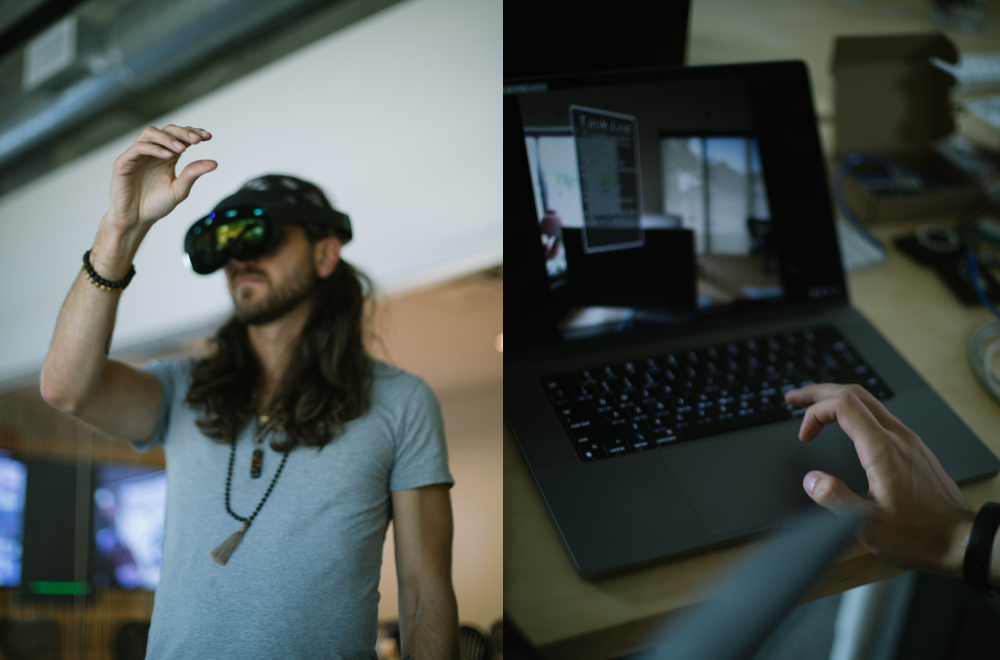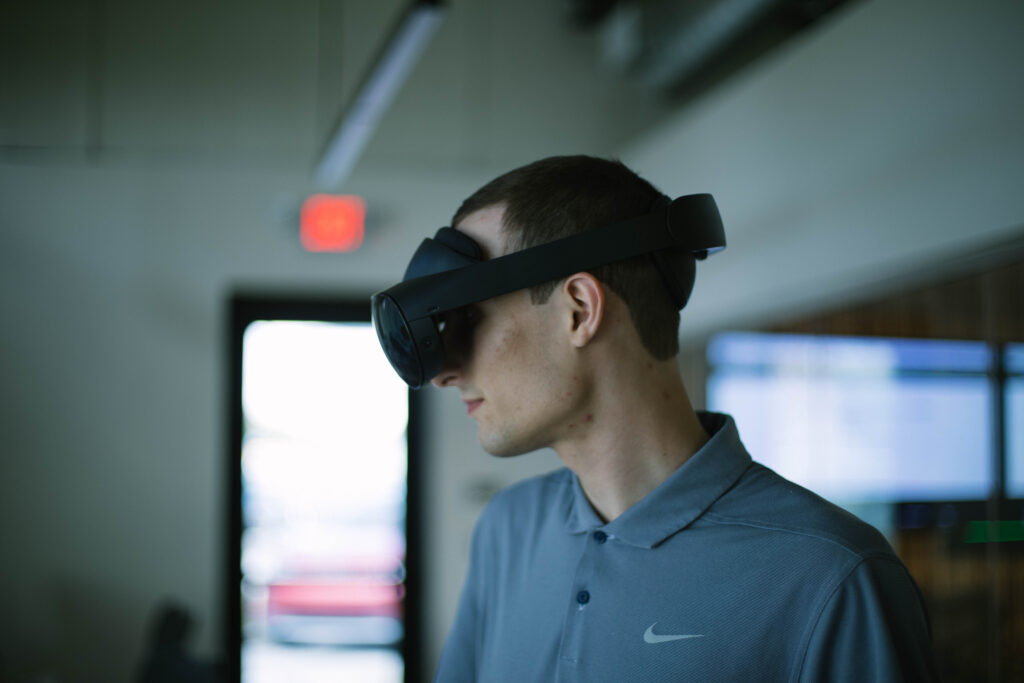Co-authored by Matt Eagle & Jordana Sackel
Breaking Boundaries With Augmented Reality
When people think of augmented reality (AR), equipment like the Meta Quest 3 and Apple Vision Pro or enhanced reality games like Pokemon Go might come to mind, but the rapid growth of these technologies shows just how much more they can do—and for more good. In fact, it’s changing the game across industries from healthcare and real estate sales to vacation planning and even scientific exploration. What’s more, are the ways this technology is helping people and businesses do things they’ve never been able to do before.
Let’s explore how.
Information
In the coming years, AR will continue to largely serve as an information platform across different industries and use cases like seeing turn-by-turn directions overlaid on your environment when trying to get somewhere or going on historical tours and seeing reconstructions of castles or monuments from hundreds of years past. Another industry that will likely grow by leaps and bounds through AR, is Information Technology (IT). As business services in the domain of information gathering, IT professionals could look at equipment and see real-time stats of how the equipment is performing and if there are any pieces of equipment that need to be serviced or are showing unexpected behavior. This could apply to data centers, corporate offices, or public spaces like retail environments or entertainment venues.

Communication
Communication surely feels like a no-brainer when it comes to AR technology, but the tools and features coming out may be giving us all a run for our money. Smartwatches began this trend, AR will take it to its next evolution. Communication was, for a long time, geo-locked. Before we had portable access to the internet, you needed to use a stationary machine to communicate. This applied not just to computers, but to home phones as well. As technology advanced, we eventually reached a stage where communication largely took place on smartphones. This is still the case but has started to move in a more "unlocked" direction. While early iterations of digital communication were locked geographically or spatially, smartphones lock it based on focus or attention. Breaking your mental or emotional connection to the world around you to periodically pull out your phone and place your focus on that device, there's still a transient divide between your environment and your digital lines of communication. The way smart watches started moving to a less walled-off focus pattern was by moving the receiving of information to your wrist and requiring you to pull out your phone less often. The more we can do to reduce the physical shift of focus, the better we can integrate digital with the real world. And smart glasses are the next step in this evolution, with smart earphones (i.e. AirPods, Google Buds, etc) being an intermediate step.

Accessibility
With 15% of the world’s population living with some form of disability or special educational need according to the World Health Organization (WHO), AR has the potential to dramatically transform people’s lives; increasing connectedness and independence for millions. For students with special needs and learning differences, for example, AR technology allows for a world of new possibilities and will likely be most effective when it's not just visual, but also auditory. That's where smart earbuds/earphones will help transition us into effective AR as the visual technology continues to develop and reach mass market viability. If an environment is too noisy, augmenting a person's hearing by reducing irrelevant noise without reducing the sounds that are important (a direct conversation, an emergency siren, etc) can help people focus and greatly reduce their overstimulation. When the visual technology reaches the same capabilities, the same will apply to visual overstimulation—which then transitions into additional support for other differences in abilities. Using the cameras, microphones, speakers, and various other sensors in wearable technology can inform people with vision impairment about their environment. Apple has already started to build this technology in iOS, where the iPhone sensors can tell someone if they're approaching a door, and how to open the door. This same technology will advance and evolve to wearables to make the experience more seamless and fully integrated into a person's day. And while there are many more examples of how equity can be brought to people of differing abilities, the concept of accessibility reaches even further. Imagine a world where language was no longer a barrier. In 2014, Google acquired a company named Quest Visual, the creator of Word Lens. Word Lens was an app that translated text through your phone camera and replaced the words in your camera view with words in your chosen language. Google has since incorporated the technology into more of its services. Bringing this technology to AR glasses would allow people to see words in the world around them in their chosen language. Further advancing speech processing, translation, and prediction technology would also allow people to hear words spoken in any language as any other language. So, two people who don't speak the same language would be able to easily have a conversation with no barrier to communication. Taking it a step further, the technology already exists to reproduce a voice in a realistic way. While the dangers of the technology have been discussed at length in recent years, it has positive applications as well. Hearing a person's words translated and spoken in their own voice would personalize the technology in a way that breaks down more barriers to communication.
No matter the industry or use case, there is no doubt that AR will continue to bridge the gap between the digital and physical worlds, offering immersive experiences that transform how we connect, share, and learn. As this technology evolves, we can likely expect to see a more inclusive and accessible world, where barriers to communication are dismantled and information becomes more engaging and tailored to individual needs. And as we embrace this journey, it's exciting to imagine the endless possibilities it will unfold, not only in enhancing our daily lives but in fostering a more connected and informed society.
